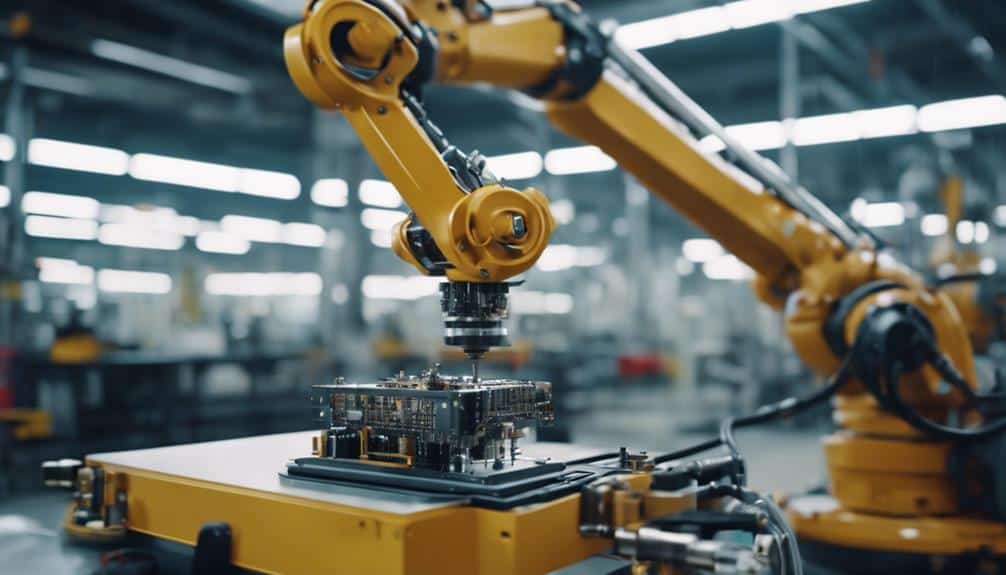Submit Your Request
Please fill out the form below.
Please fill out the form below.
Need a custom solution?

Did you know that over 90% of robots today rely on DC motors for their movement and functionality? From industrial robotics to consumer gadgets, DC motors play a crucial role in driving innovation and efficiency in the field of robotics.
But why have these motors become the go-to choice for robotic applications? The answer lies in their versatility, reliability, and ease of control.
As we explore the intricate relationship between DC motors and robotics, you will uncover the intricacies of their integration, the challenges faced, and the exciting future prospects they hold in shaping the world of automation.
Throughout the history of robotics, DC motors have undergone significant advancements and changes, revolutionizing the capabilities of robotic systems. The history of DC motors in robotics dates back to the early stages of robotic development, where simple DC motors were used to drive basic mechanical movements. As innovation progressed, DC motors evolved to become more efficient, powerful, and precise, enabling robots to perform a wide range of tasks with increased accuracy and speed.
The innovation of DC motors in robotics has played a crucial role in enhancing the performance of robotic systems. With advancements in motor design and control technologies, DC motors have become integral components in various robotic applications, from industrial automation to autonomous vehicles. These motors offer high torque-to-weight ratios, precise speed control, and quick response times, making them ideal for tasks that require agility and precision. The continuous innovation in DC motor technology continues to drive the evolution of robotics, pushing the boundaries of what robotic systems can achieve.
In robotics, DC motors offer a wide array of advantages due to their high torque-to-weight ratios, precise speed control, and quick response times. DC motors provide several benefits that lead to efficiency improvements and performance enhancements:
When selecting DC motors for robotics applications, consideration of the specific types available is crucial for optimizing performance and functionality. The main types of DC motors used in robotics are brushed DC motors, brushless DC motors, and stepper motors.
Brushed DC motors are simple and cost-effective, making them suitable for simpler robotic applications. However, they require more maintenance due to the brushes wearing out over time.
Brushless DC motors offer higher efficiency, better speed control, and longer lifespan compared to brushed motors. These motors are ideal for more complex robotics tasks that require precision and reliability.
Stepper motors are commonly used in robotics for their ability to move in precise increments, making them suitable for tasks like robotic arm movement and 3D printing.
When deciding on the type of DC motor for a robotic application, factors such as torque requirements, speed control, size constraints, and power efficiency must be carefully considered to ensure optimal performance and functionality. Performance analysis is crucial to determine the most suitable motor for the specific robotic task at hand.
For optimal integration of DC motors in robotics, addressing challenges related to compatibility, control algorithms, and power management is essential. When considering the challenges and solutions in DC motor integration, the following aspects are crucial:
Addressing the evolving demands of robotics, upcoming trends in DC motor technology are poised to revolutionize the field by enhancing efficiency and performance in robotic systems. In the near future, DC motors are expected to undergo significant improvements in efficiency, making them more energy-efficient and capable of delivering higher torque outputs while maintaining compact sizes. Moreover, advancements in DC motor design will focus on enhancing their compatibility with artificial intelligence (AI) systems, allowing for seamless integration and control within robotic platforms. These developments will enable robots to operate with increased precision and responsiveness, leading to enhanced performance across a wide range of applications.
| Future Trends in DC Motors for Robotics | Efficiency Improvements | Compatibility with AI |
|---|---|---|
| Advancements | Higher energy efficiency | Seamless integration |
| Benefits | Increased torque output | Enhanced control |
| Impact | Energy savings | Improved autonomy |
| Applications | Industrial robots | Autonomous vehicles |
When selecting a DC motor for a robotic application, consider the voltage requirements and torque considerations. Evaluate the motor size and available control options to ensure compatibility with your specific robotic system.
When comparing DC motors to stepper and servo motors in robotics, DC motors offer simpler motor control and can handle a wide range of speed variation and torque output. Their efficiency and voltage requirements make them versatile for different applications.
When working with DC motors in robotics, ensure safety precautions like overcurrent protection are in place. Maintenance is crucial for proper heat dissipation. Follow guidelines to prevent accidents and maintain efficiency of the system.
Yes, DC motors can be easily integrated with other components and systems in a robotic platform. Motor compatibility and component interoperability are crucial for seamless system integration. Ensure a cohesive control interface for efficient operation.
When using DC motors in robotics, be aware of limitations like power consumption and heat generation. These drawbacks can impact performance and efficiency. Engineers should carefully consider these factors when designing robotic systems.
In conclusion, the use of DC motors in robotics has evolved significantly, offering numerous advantages such as simplicity, efficiency, and control.
Various types of DC motors are utilized in robotics applications, each with its own unique characteristics and capabilities.
Despite challenges in integration, innovative solutions continue to drive progress in this field.
Looking ahead, future trends in DC motors for robotics point towards even greater advancements in performance, versatility, and adaptability.